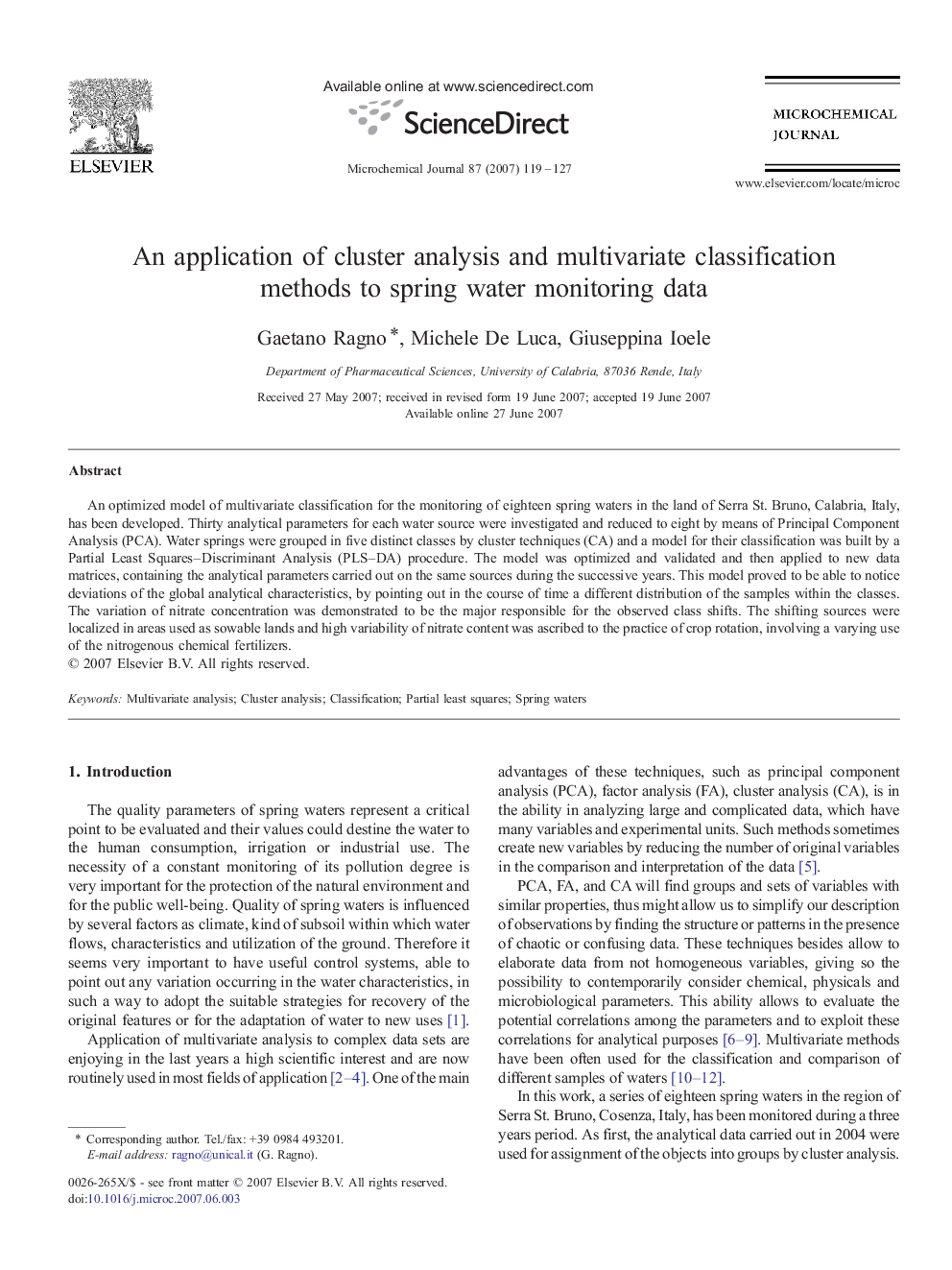| Article ID | Journal | Published Year | Pages | File Type |
|---|---|---|---|---|
| 1228225 | Microchemical Journal | 2007 | 9 Pages |
An optimized model of multivariate classification for the monitoring of eighteen spring waters in the land of Serra St. Bruno, Calabria, Italy, has been developed. Thirty analytical parameters for each water source were investigated and reduced to eight by means of Principal Component Analysis (PCA). Water springs were grouped in five distinct classes by cluster techniques (CA) and a model for their classification was built by a Partial Least Squares–Discriminant Analysis (PLS–DA) procedure. The model was optimized and validated and then applied to new data matrices, containing the analytical parameters carried out on the same sources during the successive years. This model proved to be able to notice deviations of the global analytical characteristics, by pointing out in the course of time a different distribution of the samples within the classes. The variation of nitrate concentration was demonstrated to be the major responsible for the observed class shifts. The shifting sources were localized in areas used as sowable lands and high variability of nitrate content was ascribed to the practice of crop rotation, involving a varying use of the nitrogenous chemical fertilizers.
